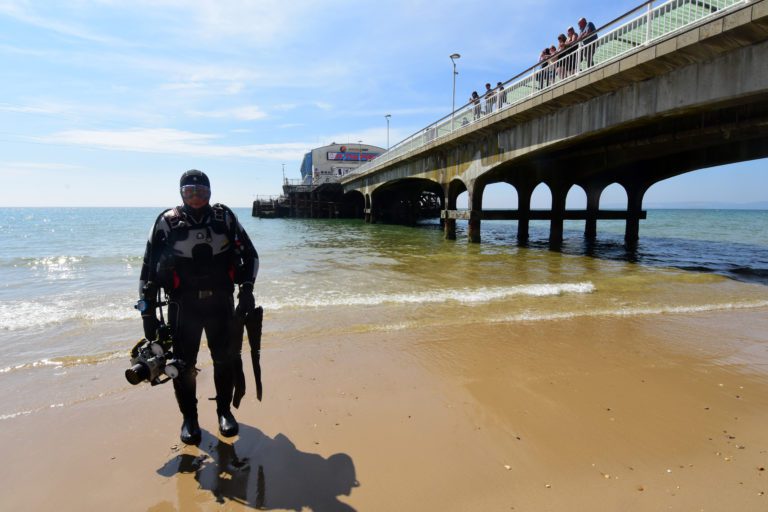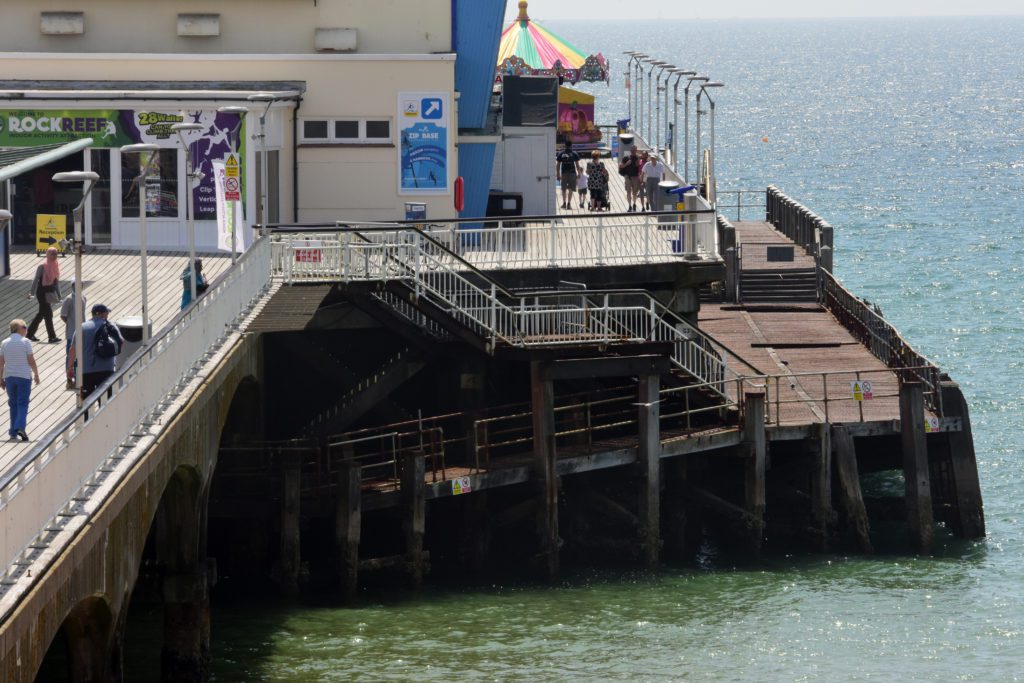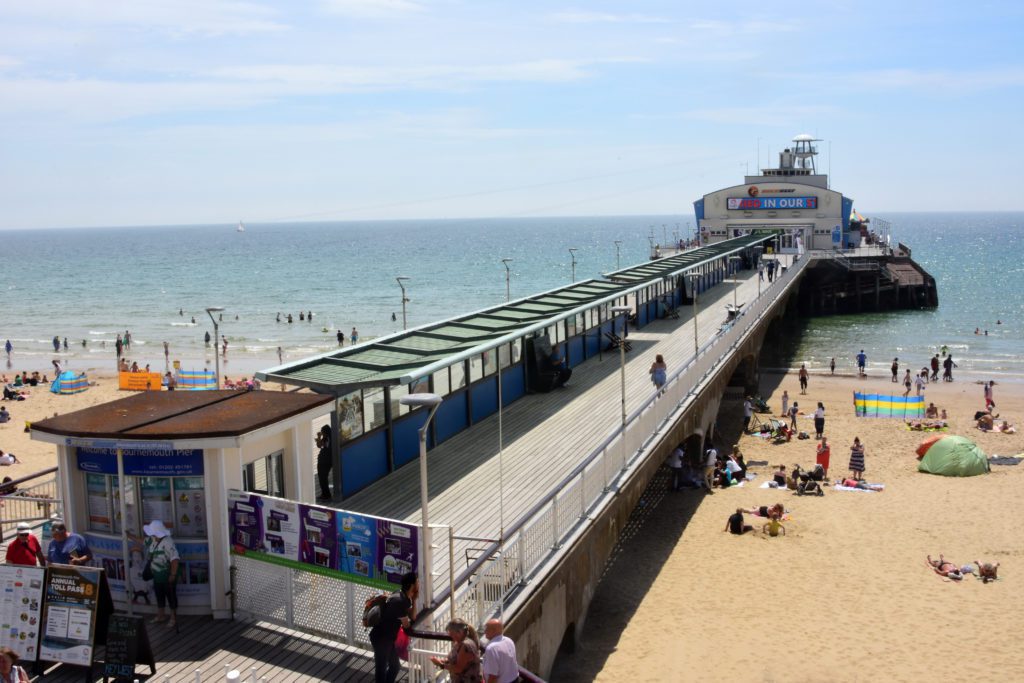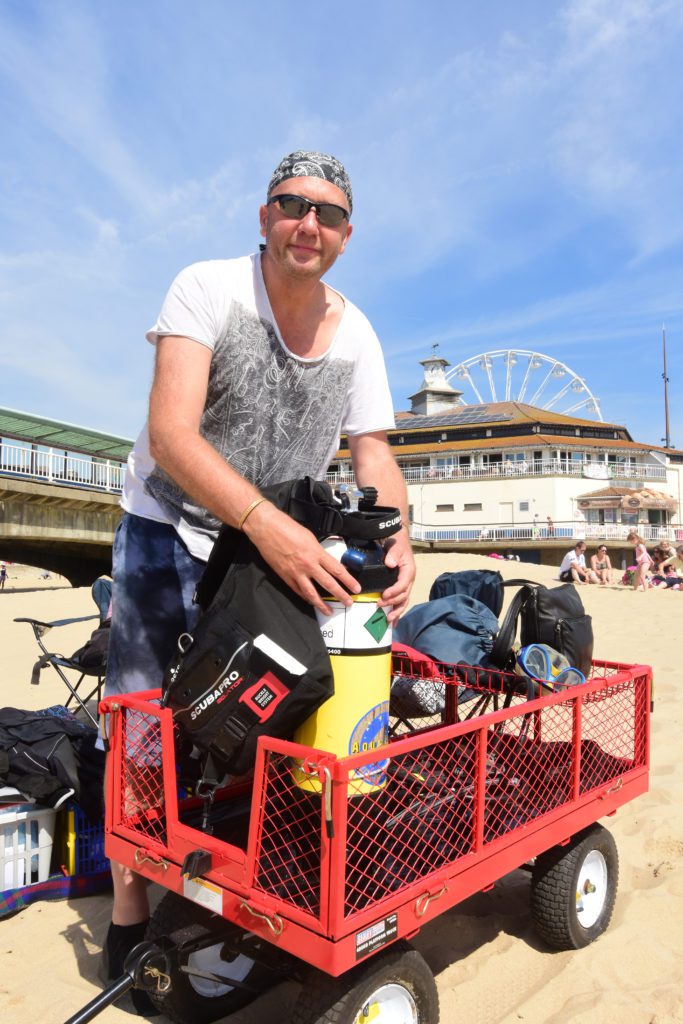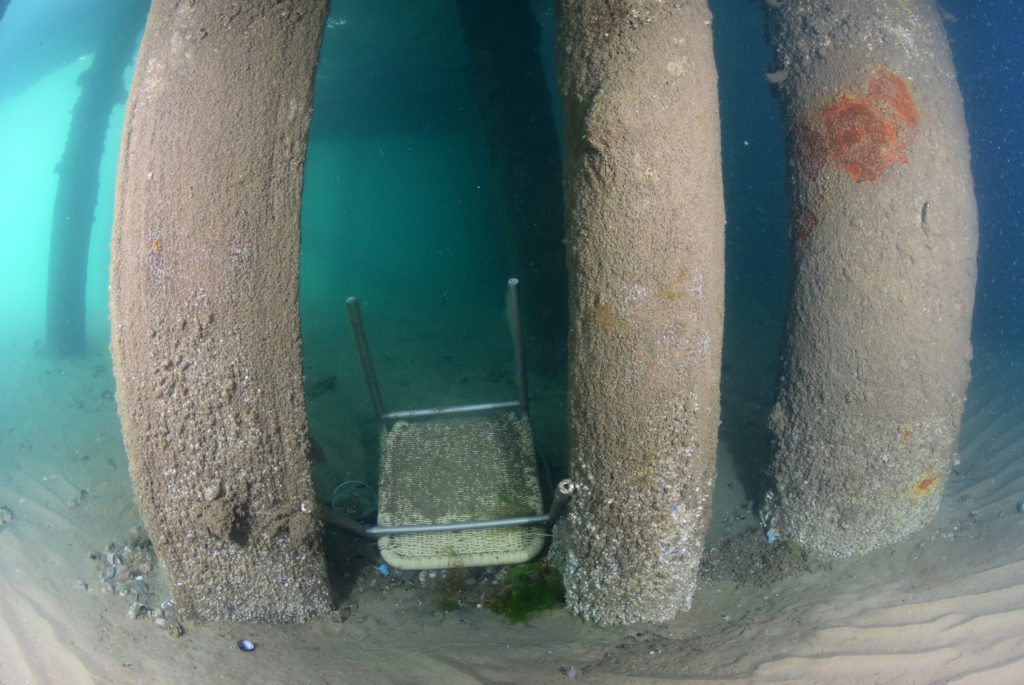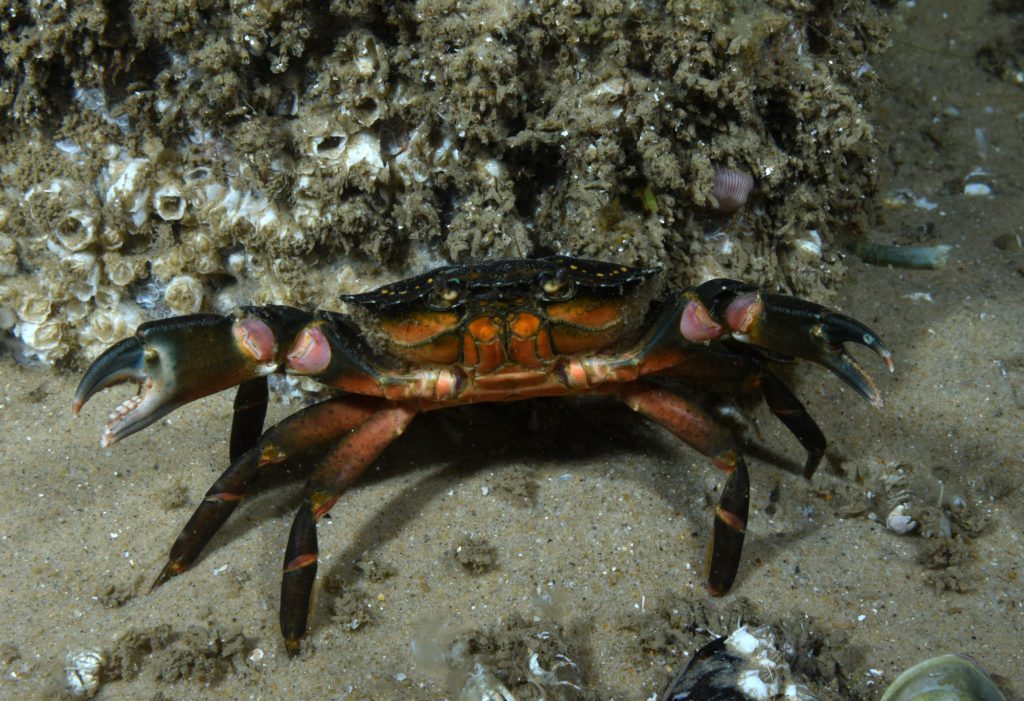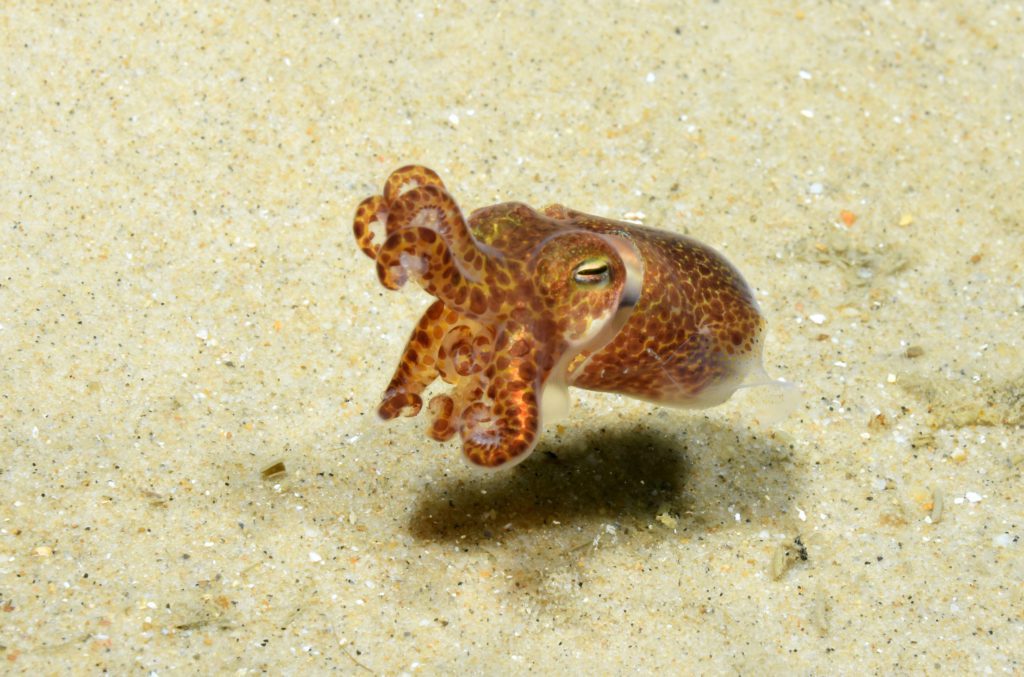JEREMY CUFF continues his exploration of lesser-known shallow-water dive-sites on the South Coast, this time visiting the popular tourist haunt of Bournemouth Pier
Many people visit Bournemouth’s beach and pier on the South Coast, but rarely for the purpose of diving. Dorset-destined divers generally choose the more-traditional dive-sites such as Swanage and Portland further to the west, but there are other possibilities. So how about Bournemouth Pier as a suggestion for something different? It takes a bit of planning, but can make for an interesting diving day or weekend.
Dives under piers are often interesting. Enjoying some really good conditions under the iconic Swanage Pier, it got me thinking about other piers that I might be able to dive.
Bournemouth’s is a large, traditional-style seaside pier with cafés, stalls, an amusement arcade and a more recently installed zipwire connecting to a landing platform on the beach. It sits prominently in the wide arc of the bay, jutting out from that beach. I couldn’t find much information about people having dived it on Google, but that didn’t only aroused my curiosity further.
My visit coincided with a June heatwave, so I would be sharing the packed beach with throngs of assorted bathers. It’s a safe, swimmer-friendly beach, so there’s little in the way of dangerous currents to get concerned about.
Because scuba-diving is usually conducted away from the mainstream, so to speak, it was quite weird to dive around all this beach activity. I received some strange looks from people, which amused me; as I emerged from the water after a dive, I seemed to appear as some species of sea monster.
Combined with local attractions, diving this pier can offer a good diving day or break, as well as providing plenty of things to do for non-divers. In fact bringing along non-divers is very useful, because they can relax on the beach while looking after your seats, towels, car keys and so on.
Arriving at Bournemouth Pier
The biggest issues for divers to solve are where to park, how best to get your gear to the beach and then back again, and how to store your stuff while you’re in the water, going for lunch and so on. Added to that, there are no facilities dedicated to divers, so you must bring along everything you need.
On a warm summer weekend, you do need to get there early-ish to be able to park nearby. For this reason I chose to treat myself to an overnight stay in Bournemouth, which worked out well. The best places to leave your vehicle are the two car parks just upslope from the pier area (admittedly not cheap for the day), above the Harry Ramsden’s fish & chip restaurant and across the road by the Pavilion.
Some kind of hand-pulled trailer to transport the gear and supplies, such as a garden trolley with soft wheels, is almost essential here. I purchased one last year for this kind of dive trip and it proved to be invaluable once again.
Having said that, it’s still hard work dragging the trolley across dry sand. However, another advantage of having a trolley is that you can keep everything free of the sand. Considering that you’re on a beach, this isn’t easy, but the trolley allows you to store and drain wet gear.
It’s also a good idea to take some towels or beach-mats if you need more space on which to kit up. Helpfully, there are beach showers nearby if you need them.
Before the dive
Once you’ve dealt with the logistics of getting set up on the beach beside the pier, it’s just a case of heading out to whichever section of the pier you’ve decided on. It’s a shore entry that’s easy for even the most unsteady of divers, because there is no incline and no rocks.
The dive itself is very shallow, with the deepest depth you’d be likely to attain being 3-4m at the very end of the pier at high tide. Overweighting yourself is probably the way to go here, to ensure that you’re able to avoid accidentally bobbing up (perhaps risking clunking your head on a beam in the process), or spending the whole dive kicking to stay down, which is no fun.
The tidal range isn’t huge, so it’s possible to dive at any time, though it’s much easier (and better) when the tide is higher. I became a sun-seeker between dives as I waited for the high tide to return, which made the day quite relaxing and slow-paced. During my visit there was no appreciable current, although you might experience surge if any waves are blowing in.
The unhelpful weather to watch out for is any wind (especially an easterly or a southerly). I suspect that any significant wave action will destroy the visibility here because of the sandy bottom, and also make entry/exit from the water difficult. Because of this, I would define the pier as a “good weather, light winds only” dive-site.
In terms of diver safety, the biggest hazard are probably jet-skis, even though they’re supposed to stay away from the immediate area of the pier. It’s quite dark under the pier (even on a bright sunny day), so a torch would be useful, especially when checking out the pier legs. Also, if visibility is poor, it’s essential that buddy-pairs stick together to avoid getting separated.
Bournemouth beach is regularly patrolled by lifeguards (certainly at peak times), and they might ask what you’re doing, but they won’t stop you. One approached us and he happened to be a scuba diver. He confirmed that it’s an interesting dive, having done it himself in the past.
The dives
As soon as I entered the water and submerged I liked the look of the scene. I expected to see lots of rubble and rubbish beneath the pier, but it was surprisingly clear, with clean sandy expanses. I would soon find out that the sandy expanses belied their desert-like appearance by being very active with marine life.
The sightings began straight away, and I realised that I’d discovered an interesting place to dive. The sand was alive with activity, with flounders (including many tiny juveniles), hermit crabs, velvet swimming crabs, tubeworms, assorted small fish and shrimp everywhere I looked, and the occasional spider crab desperately running for cover.
The highlight for me was an encounter with a small bobtail squid (Sepiola atlantica), which I managed to photograph. As this species is closely related to cuttlefish, it’s also known as the little cuttlefish, which can be confusing for ID fanatics.
Once I spotted it, I pursued it around the sand for a while as it changed colour in irritation (or mortal fear) of my persistent attentions. Eventually, it jetted away in a tiny squirt of ink.
In terms of the pier structure itself, the legs and supporting beams are very active and sometimes colourful, at times reminding me of more tropical piers that I’d dived in the past. Close scrutiny revealed them to be alive with crabs, assorted growth, mussels, anemones, wrasse and even a tiny scorpionfish. I’m sure more dives would reveal many other species.
The shelter afforded by the pier also attracts plenty of fish, with bass being reported as frequent visitors by the lifeguard. Out on the sand, schools of silvery sand eels could be seen, but it was difficult to get close to them. I suspect that grey mullet, john dory and perhaps even thornback rays might frequent the area at times.
This dive can be very rewarding for enthusiasts of marine life and also for underwater photographers, whether from a macro or wide-angle perspective. I found it very enjoyable, and was glad that I had made the effort to do the dives. You could describe it as a good dive-site that’s hiding in plain sight.
Bournemouth Pier, Dorset
Type of dive: Very shallow shore-dive (much easier and better at high tide).
Depth: Exact depth varies depending on tides and where you choose to go, with the maximum being 3-4m, so make sure you carry sufficient weight to stay down.
Marine life / What to look out for: Depending on time of year, expect spider, edible and velvet swimming crabs, tompot blennies, pipefish, wrasse, bass, sand eels, flounder, prawns, anemones and jellyfish. You might also be lucky to see cuttlefish and even scorpionfish – or a bobtail squid.
Visibility: Variable depending on wind direction and other factors, but can be 6-8m if you’re lucky. On less ideal days, it can be very much reduced. Average is probably 2-4m.
Seabed: Flat sandy expanses, pier-legs and beams.
Hazards: Stray jet-ski traffic, low visibility, disorientation, discarded fishing line, surge.
Photographs by Jeremy & Amanda Cuff
Also on Divernet: Diving Kimmeridge Bay, The ‘Wick’ At St Abbs, The Swanage Pier Dive, The Countess Of Erne, Diving At Drawna Rocks, Diving Puffin Island, Diving The Royal Adelaide
